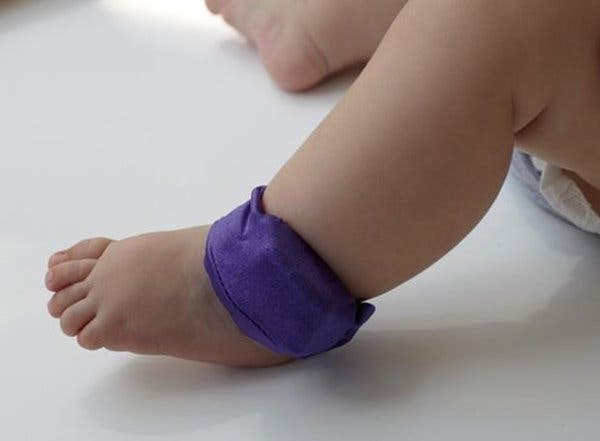In a world that encourages inactivity, even our babies may be moving too little, according to an innovative new study of physical activity patterns during a child’s first year of life. The study, which used tiny activity trackers to monitor babies’ movements, found associations between infants’ squirming, kicking, crawling or stillness and the levels of fat around their middles, raising provocative questions about just how early any links between inactivity and obesity might begin.
We already have considerable evidence, of course, that children in the Western world tend to be sedentary. According to recent estimates, most school-age children in the United States sit for more than eight hours a day, while children as young as 2 or 3 years of age can be sedentary for 90 percent or more of their waking hours. These statistics are concerning, because other studies suggest that inactive children face much higher risks of becoming overweight or obese than children who move more often.
But little has been known about how much — or little — tiny babies move and if there might be correlations between their activities and their rotundity, and if such correlations matter.
So, for the new study, which was published this month in Obesity, a group of researchers from Johns Hopkins University and other institutions decided to fit baby-size trackers to infants’ ankles and watch how they wiggled.

They began by turning to new mothers already participating in a large, ongoing study of the health of mothers and newborns and asking if they could now track their babies’ activities. The researchers wound up recruiting 506 young boys and girls from various socioeconomic levels, more than half of them African-American.
The researchers visited these infants in their homes when the babies were 3, 6, 9 and 12 months old, weighing and measuring the children, gently checking their body fat with calipers and fitting them with tiny accelerometers.
The babies then wore these monitors for four days after each home visit, to provide a measure of how active they were.
Such measurements of infantile activity are inherently “problematic,” says Sara Benjamin-Neelon, an associate professor at Johns Hopkins Bloomberg School of Public Health and the new study’s lead author. Accelerometers on infants “will pick up movements like kicking and rolling over,” she says, which are made by the baby. But they also can capture and potentially misinterpret movements initiated by parents or caregivers, such as picking up the child or swinging him about, although the child is not then moving on her own.
But even recognizing those obstacles, the researchers saw clear, consistent patterns in the babies’ movements when they compared readouts month over month.
“Activity increased” as the babies grew older, Dr. Benjamin-Neelon says, “which is what we would expect to see.” In fact, the babies’ daily physical activities grew by about 4 percent over the course of each three-month period, marking their normal progress toward starting to stand, crawl and sometimes toddle.
But there were differences among the children, with some babies moving noticeably more each day than others, starting at the age of 3 months. And when the researchers compared those differences to the babies’ adiposity then, they also found another clear pattern. Those babies who moved the least generally were also the babies with the most fat around their middles. (The researchers controlled for breastfeeding.)
Babies are not meant to be svelte, of course. Beachball physiques are standard in this age group. But even so, the correlation between relative inactivity and greater adiposity in these babies was noteworthy and could be worrisome, Dr. Benjamin-Neelon says.
“Infants who are heavier and infants who gain weight too quickly in the first year of life tend to be heavier children later,” she says.
The accelerometers did not show what inactive babies were doing instead of wiggling, scooting or walking. But the researchers suspect that they were “spending a lot of time in restrictive devices,” Dr. Benjamin-Neelon says, such as strollers, highchairs and car seats.
Many also may have been staring at screens. Other data collected among the volunteer families (but not included in this study) indicates that about half of the 3-month-old infants and three-quarters of the 1-year-olds “engaged with screens,” Dr. Benjamin-Neelon says, some for two hours or more each day.
The upshot of these findings, limited and preliminary as they may be, would seem to be that parents and caregivers might want to monitor how much babies move and encourage them to move more, Dr. Benjamin-Neelon says.
“Allow babies to spend supervised time each day moving freely on the floor,” she says, “as long as the environment is safe.” Even infants who are too young to crawl can benefit. “Tummy time allows infants to lift their heads and develop and strengthen upper-body muscles,” she says. “This is anecdotal, but I have heard pediatricians say that many infants in their practice now are lacking upper-body strength.”
This study did not track babies after they turned 1, however, and so cannot tell us whether inactive infants face lingering risks of being sedentary or overweight later. The researchers are still working with these same children, some of whom will start kindergarten soon, and plan to report on their health and physical activities in future studies.

